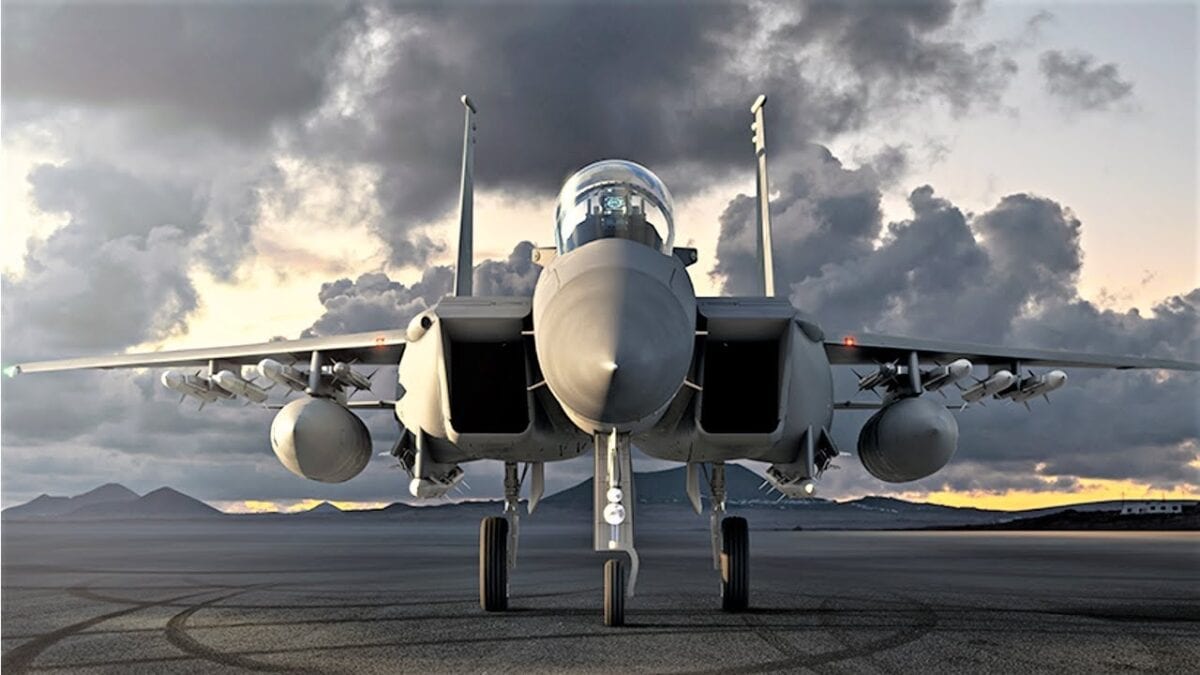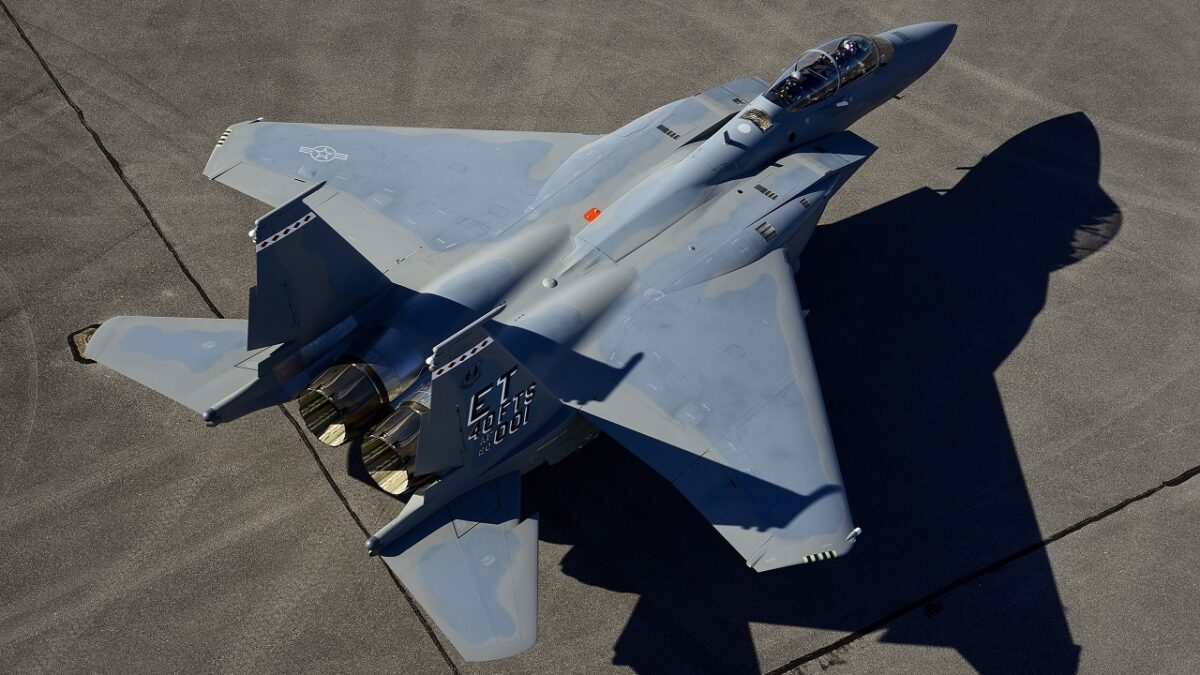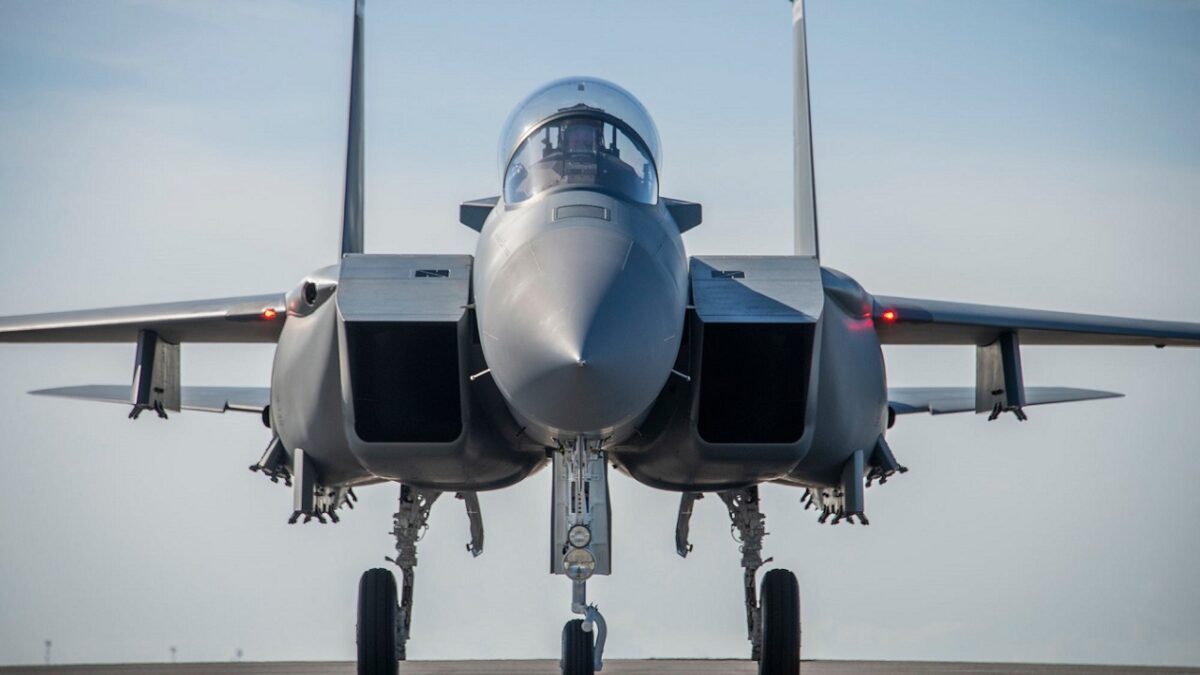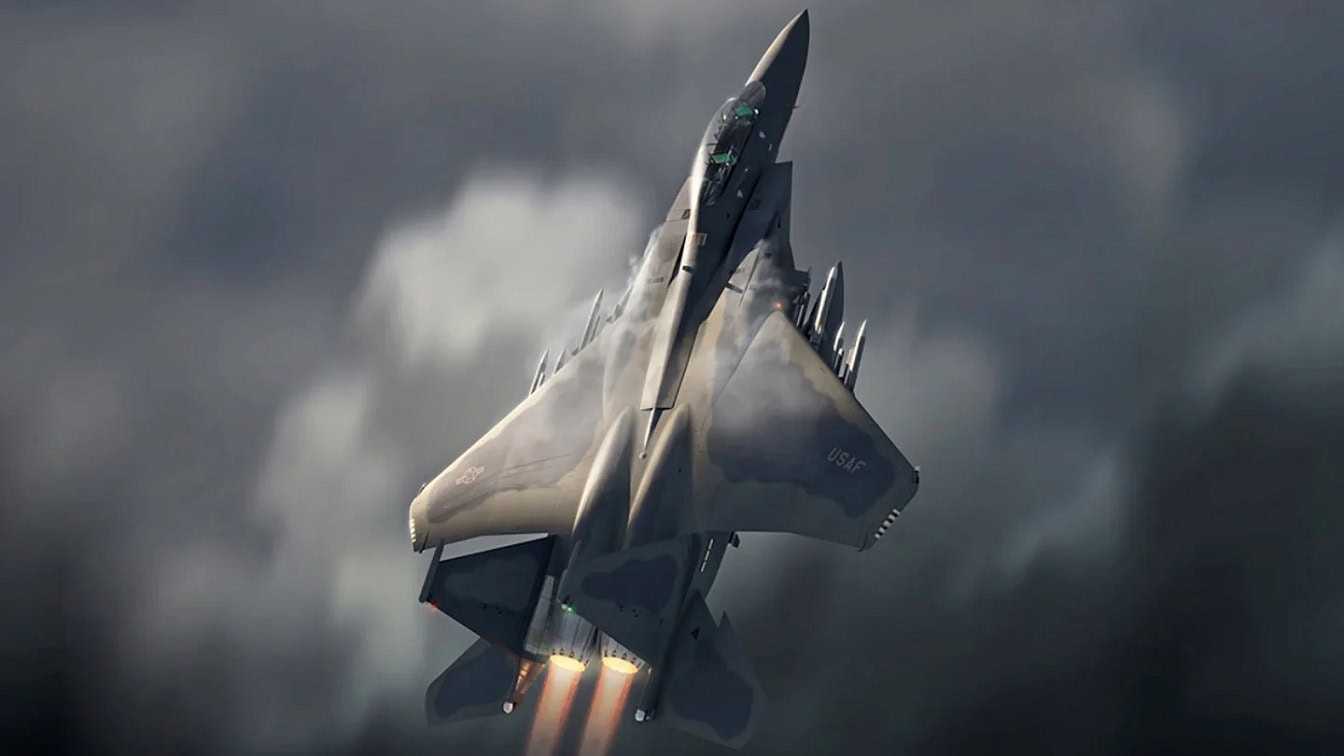The F-15EX Eagle II made its inaugural appearance in St. Louis this week, a significant milestone for the Air Force. Once in service, the new formidable platform will represent the most heavily armed fighter jet in the skies.
Manufacturer Boeing was able to roll out the first fighter after a nearly two-and-a-half-year gap since the delivery of the initial two F-15EX airframes back in Spring 2021. This third jet, sporting yellow and green primer paint, was the first to be built featuring the exact specifications ordered by the Air Force.
In July, Congress accepted an amendment to the National Defense Authorization Bill that allocated additional funds for the Air Force to procure the F-15EX. Since the A-10s that currently fly with the service are expected to retire by the end of the decade, acquiring their replacements is a top priority.
Following the F-15EX Eagle II program’s go-ahead back in 2020, the Air Force urged Boeing to deliver these new airframes in an expedited manner.
The manufacturing giant opted to divert two airframes from its F-15QA production line headed to Qatar and deliver them to the U.S. Air Force instead, indicating its commitment to following through on deadlines.
A Brief History of the Air Force’s New Fighter
The Eagle II is derived from the Air Force’s F-15C Eagle, which is one of the most successful fighter platforms ever produced. When the Navy and Air Force embarked on the collaborative effort to develop a jointly utilized airframe, the F-15 was born.
The platform was created to fulfill the Air Force’s medium-range interdiction airframe need as well as the Navy’s long-range interceptor airframe need. McDonnell Douglas (now Boeing), beat out competitors and was ultimately awarded the contract to develop the twin-engine, all-weather tactical fighter airframe. In the early 1970s, the F-15A took its first flight and was delivered to the 58th Tactical Fighter Training Wing two years later.
Specs and Capabilities
Over the years, the Eagle has been widely exported.
Countries including Japan, Israel, and Saudi Arabia all fly the highly capable fighter platform. All five variants of the Eagle can carry a large number of missiles, fuel, ground bombs, and advanced radar.
In addition to its hefty ordnance-lugging capabilities, the F-15 features state-of-the-art electronic warfare capabilities. The F-15C model incorporates an increased fuel capacity and enhanced avionics from its predecessor.
While this variant has served the Air Force well since its introduction to service, the latest Eagle II variant is expected to blow its capabilities out of the water.
As the first Air Force F-15 variant to be fitted with digital fly-by-wire flight controls, Joint Helmet Mounted Cueing System, EPAWSS self-defensive suite, and a Large Area Display glass-cockpit, the new F-15EX is truly unparalleled.
The new variant will sport 12 air-to-air munitions, including the AIM-9 Sidewinder and Aim-120 AMRAAM, making it the heaviest equipped air superiority fighter across the globe.
The fifth-generation F-22 Raptor can comparably only carry up to eight air-to-air munitions, while the F-35 Lightening II can carry up to six total in its internal weapons bay and external hardpoints.
As detailed by the Bulgarian Military, “The F-15EX Eagle II differs from other versions of the F-15 in several ways. It has a longer service life and lower operating costs than the older F-15C/D models, which makes it a more cost-effective option for the USAF.
The F-15EX also has a more advanced mission system, which allows it to perform a wider range of missions than previous versions. Finally, the F-15EX has a larger weapons capacity and can carry a wider range of weapons than previous versions, which makes it a more versatile fighter jet.”
Indonesia Pens Deal to Procure the Eagle II
Other countries have already begun to eye the Eagle II. Earlier this week, Indonesia’s defense ministry signed a contract with Boeing to purchase two dozen F-15EX fighters in the upcoming years. Jakarta hopes this new addition of robust fighters will help modernize its Air Force’s rapidly aging fleet of airframes.
In recent years, a growing number of incidents involving Indonesian and Chinese ships have transpired in the South China Sea. The addition of the new Eagle II fighters to Jakarta will coincide with this uptick in regional tensions as the Indonesian government works to bolster its defense of oil and gas drilling activities in its exclusive economic zone off Natuna.
Over the last decade, Russia and China have ramped up their respective advanced fighter programs. Both U.S. adversaries now possess their own fifth-generation platforms, which were designed to counter the Raptor and Lightening II airframes. The incorporation of the F-15EX II into the USAF will give the U.S. military an edge over its competitors.
F-15EX Photo Gallery

F-15EX. Image Credit: Creative Commons.

The F-15EX, the Air Force’s newest fighter aircraft, arrives to Eglin Air Force Base, Florida March 11. The aircraft will be the first Air Force aircraft to be tested and fielded from beginning to end through combined developmental and operational tests. The 40th Flight Test Squadron and the 85th Test and Evaluation Squadron personnel are responsible for testing the aircraft. (U.S. Air Force photo/1st Lt. Karissa Rodriguez)

F-15EX. Image Credit: Boeing.
Maya Carlin, a Senior Editor for 19FortyFive, is an analyst with the Center for Security Policy and a former Anna Sobol Levy Fellow at IDC Herzliya in Israel. She has by-lines in many publications, including The National Interest, Jerusalem Post, and Times of Israel. You can follow her on Twitter: @MayaCarlin.
From The Vault
The Navy Sent 4 Battleships To Attack North Korea
‘Sir, We Hit a Russian Submarine’: A U.S. Navy Sub Collided with a Nuclear Attack Sub

